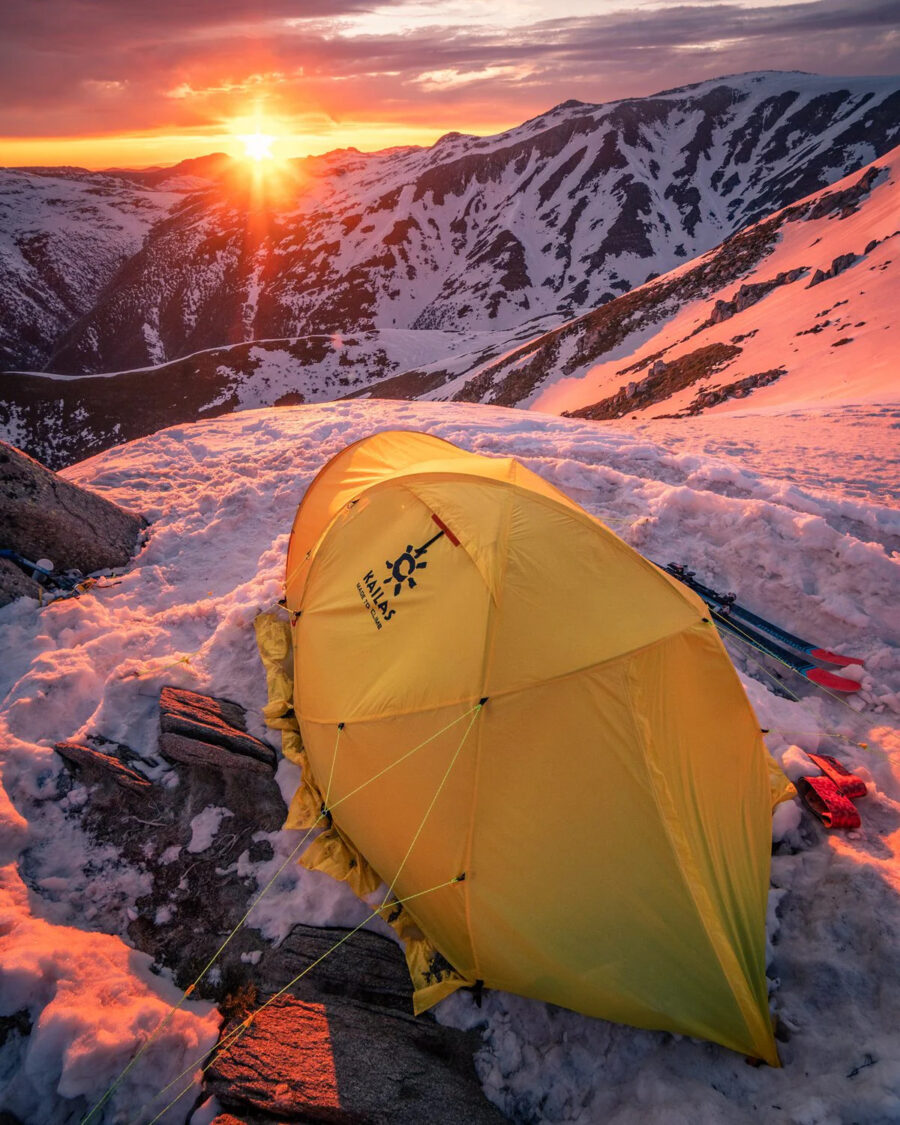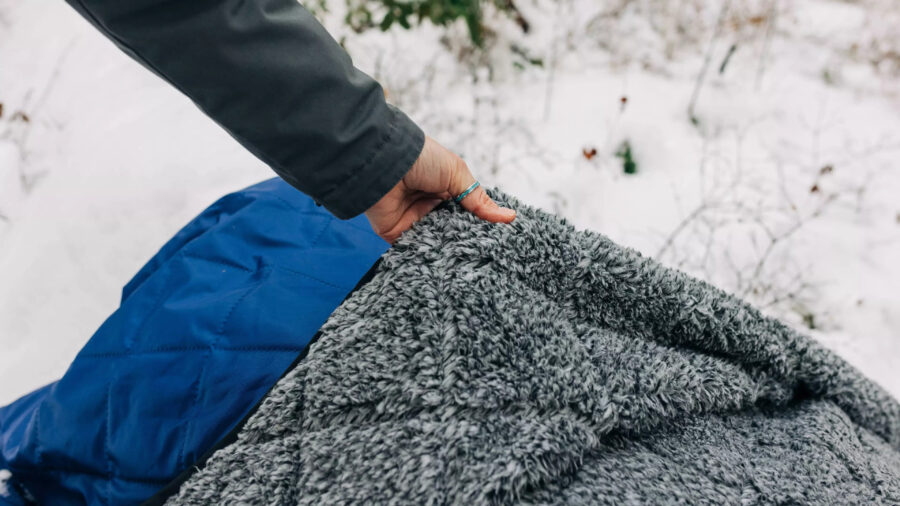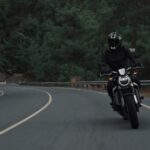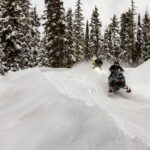Going camping during the winter requires different type of equipment, and slightly more equipment than summer camping. And, the focus is all on staying warm, so these are the essentials you’re going to need.
Winter Tent

Don’t be afraid to go camping during the winter. If you have the right tent, you can do it no matter the circumstances. There’s a wide variety of winter camping tents you can choose from. With this vast array of options, there are just a few things to consider. The first question you should ask yourself is if you need a 4-season or a 3-season tent.
The 4-season tents are perfect for winter camping. They’ll stand through storms and other extreme weather conditions. To give you more warmth, they have more solid fabrics than mesh. The 3-season tents are also suitable for winter camping, just not in heavy storms and snowfalls. They’re better for strong winds and heavy rain.
The shape of the tent is also important. A geodesic or dome-shaped winter tent are the best shape choices. They bring more stability and resistance and can stand up to the winds and snow much better than cabin-shaped tents. Make sure that the tent you pick is completely waterproof because precipitation is more likely to occur during the winter.
If there is an integrated groundsheet, make sure the material is strong enough because any cracks could let water in. In case there’s a leak, make sure you carry a few extra emergency patches to repair it. The tent’s colour is probably not the first thing that comes to mind, but it matters. It’s better to buy a brightly coloured one so you can find it easily in case of a snowstorm.
Camping in the winter means more equipment, blankets, ice axes, coats and warm clothing. This means you’ll need a bigger tent to fit everything inside. However, a bigger tent is harder to set up in the snow, so you have to find the right balance between size and installation. Make sure the tent has good ventilation to keep the air flowing and prevent condensation from your breath and body heat.
You should absolutely get a lightweight tent if you intend to do mountaineering, trekking, or ski touring. This might not be as much of an issue, if you intend to drive to your campground. But if you’re walking, a lightweight tent will be the best choice.
Sleeping Bag
It goes without saying that the insulation or fill will greatly influence your sleeping bag experience. More insulation means more warmth. However, thickness is not the only determining factor. The type of insulation matters as well. Will it be synthetic or down? Synthetic insulation is a good winter choice because it’s water-resistant and reasonably priced.
However, it can be a bit bulky and heavier to carry around. So, if you’re walking to the campsite, it might not be the best choice. Down is the superior insulation option. It’s also lightweight and won’t lose its shape no matter how much you compress it. On the other hand, down insulation can be more expensive. But it’s an investment worth making.
Sleeping bags also come in several shapes. Rectangular ones aren’t very suitable for winter conditions because they’re not tapered at the legs. The mummy shape is perfect for winter camping. It’s tapered at the legs and will keep you warm. It’s smaller though, and quite like a sleeping pad, so it can be a bit claustrophobic.
You may take some time to get used to them. But if you have big winter camping tents, this shouldn’t be an issue. Semi-rectangular bags are more comfortable, spacious and bulkier. They’re a good balance between warmth and comfort. There are also double bags if you’re a family camper.
Warm Blanket

Even though you have a snow tent, you’ll need a nice blanket for extra warmth. Look for something with good insulation, something that traps heat and staves off hypothermia. The blanket’s material can make a big difference. Wool is a natural fibre that will still be a good insulator when it’s wet as it’s moisture-wicking. It’s also fire-resistant.
Polyester is a synthetic fibre that has great insulating properties. It’s also fire-resistant, waterproof and durable. You can carry several of these blankets because polyester is additionally lightweight. Fleece is a nice alternative that’s lightweight, dries quickly and has good insulation.
Warm Clothing & Shoes
No tent, blanket or sleeping bag will be enough to protect you from the cold if you don’t have proper winter clothing and shoes. It’s all in the layering process. If you do it right, you’ll be comfortable throughout the whole trip. The base layer is there to wick the sweat and moisture. Materials like merino wool, polyester and nylon should be your first choice.
The mid layer are the sweaters, vests and pullovers. The best materials for this layer are fleece, down, wool and synthetics. The outer layer should be your jacket and pants. They should have water-repellent properties, good insulation and be lightweight. Don’t forget the hats, gloves and socks.
Your camping shoes are the base of your comfort in the wild. Besides having a comfortable inner sole and a sturdy outer one, they should be made of durable materials and be waterproof. Winter camping means lots of snow and water and you need all of the protection you can get. Leather and synthetics are both good choices.
Other Necessities
There are several other things you should bring along to make your camping trip comfortable. An ice axe is one of them. It can be a very practical tool during heavy storms and frozen lakes. A shovel can be nice to have in case you get a snowstorm and you need something to get you out of the tent.
A stove and fuel will help you cook your meals and give you warm water. Eating warm soups and meals can help you stay warm during your camping trip. Bring enough fuel so it lasts while you’re there. Insulated bottles are perfect for keeping your tea and coffee warm while you take a casual walk in nature.



